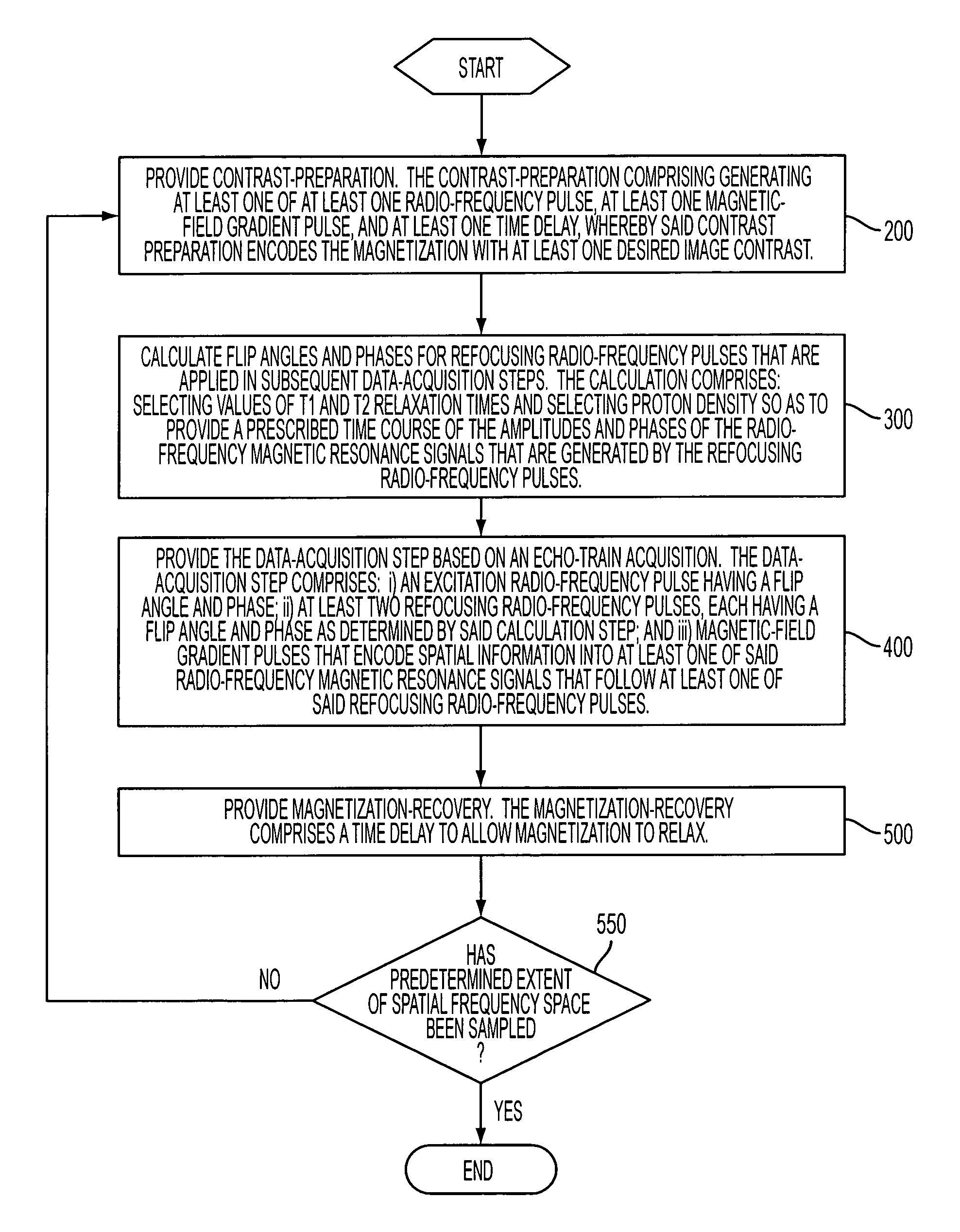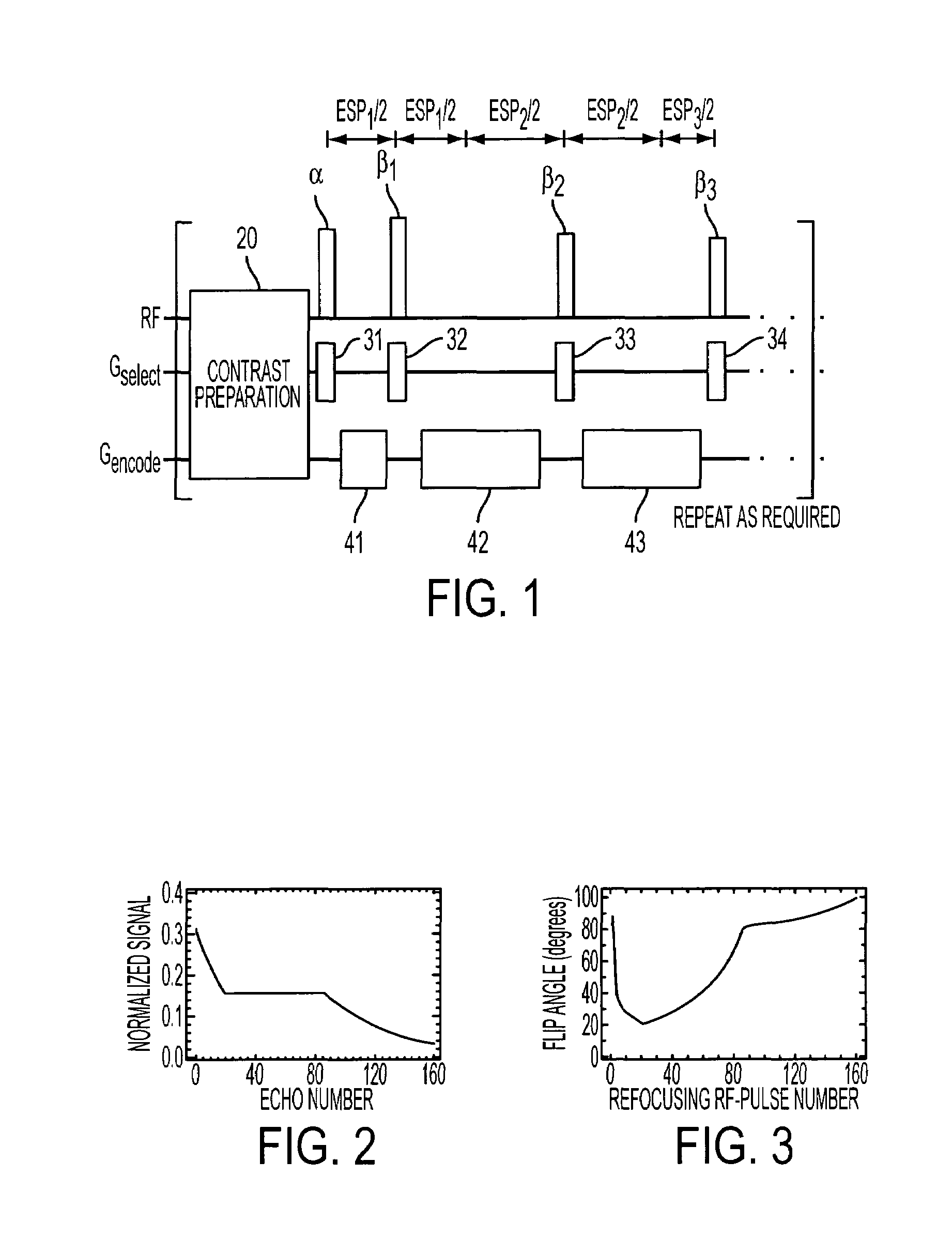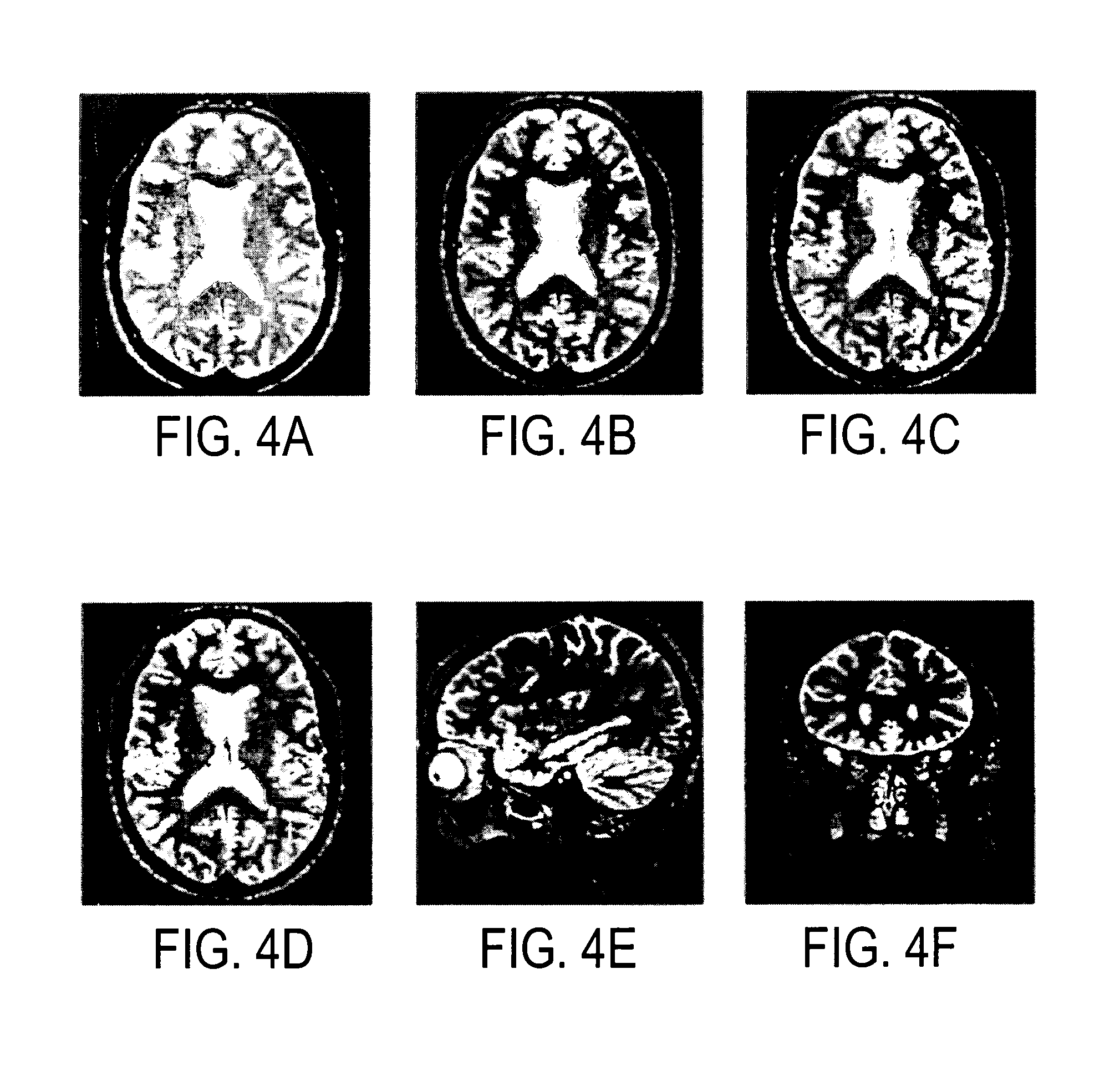Method and apparatus for spin-echo-train MR imaging using prescribed signal evolutions
a signal evolution and spinechotrain technology, applied in the direction of reradiation, measurement using nmr, instruments, etc., can solve the problems of introducing artifacts such as blurring, substantial degrading image contrast, etc., to increase spatial resolution, reduce image acquisition time, and extend the usable duration of the echo train
- Summary
- Abstract
- Description
- Claims
- Application Information
AI Technical Summary
Benefits of technology
Problems solved by technology
Method used
Image
Examples
examples
[0079]Specific implementations of the present invention methodology are useful to illustrate its nature. These examples are non-limiting and are offered as exemplary only. For this purpose, set forth herein are experimental studies in which the present invention method was used to generate variable-flip-angle series for three-dimensional (3D) T2-weighted MR imaging of the human brain and cervical spine using a “turbo-SE” type (i.e., RARE-as set forth in Henning et al., Magn. Res. Med. 1986, 3:823–833) spin-echo-train pulse sequence, of which is hereby incorporated by reference in its entirety. Brain studies were performed at 1.5 Tesla and 3 Tesla; spine studies were performed at 1.5 Tesla. MR images were obtained using a 1.5-Tesla commercial whole-body imager (MAGNETOM SYMPHONY, Siemens Medical Systems, Iselin, N.J.) or a 3-Tesla commercial whole-body imager (MAGNETOM ALLEGRA, Siemens Medical Systems, Iselin, N.J.). The standard head RF coil supplied with the imager was used. Inform...
example no.1
Example No. 1
[0081]FIGS. 4B–4F show an example of MR brain images obtained at 1.5 Tesla using the variable-flip-angle series of FIG. 3 in a “turbo-SE” type spin-echo-train pulse sequence; collectively. In particular, the T2-weighted two-dimensional and three-dimensional SE images of FIGS. 4(A) and 4(B)–4(C), respectively, were obtained from a 59 year old volunteer for demonstrating age-related non-specific white-matter lesions. As can be observed, arrows mark several of these lesions. The adjacent 1-mm thick 3D images, as shown in FIGS. 4B–4D, correspond to the single 3-mm thick 2D image in FIG. 4A. In the 3D images, the phase-encoding direction corresponding to the 160-echo train is left-to-right in FIGS. 4B–4D and 4F. No image artifacts secondary to this very long spin-echo train are apparent. Pulse sequence parameters for the 10 minute 3D acquisition included the following: repetition time / effective echo time, 2750 / 328 ms; matrix, 256×160×216; field of view, 25.6×16.0×21.6 cm; vo...
example no.2
Example No. 2
[0084]Next, referring to FIGS. 5A–5C, using the same pulse-sequence parameters as described above in FIGS. 2–4, T2-weighted images were also obtained at 3 Tesla from the brain of a healthy volunteer. The three 1-mm thick images were all reconstructed from the same 3D acquisition. These images appeared similar to those obtained at 1.5 Tesla, but exhibited higher signal-to-noise ratios. Of particular importance, the partial-body and local values for the specific absorption rate (SAR) were 1.29 W / kg and 3.16 W / kg, respectively, compared to the FDA limits for partial-body and local SAR of 3.0 and 8.0 W / kg, respectively. The SAR values at 3 Tesla were much less than the FDA limits, indicating that there remains substantial latitude in the pulse-sequence design from the perspective of power deposition, including the possibility for even more refocusing RF pulses per excitation. Thus, according to the present invention, although the use of spin-echo-train methods has been rest...
PUM
 Login to View More
Login to View More Abstract
Description
Claims
Application Information
 Login to View More
Login to View More - R&D
- Intellectual Property
- Life Sciences
- Materials
- Tech Scout
- Unparalleled Data Quality
- Higher Quality Content
- 60% Fewer Hallucinations
Browse by: Latest US Patents, China's latest patents, Technical Efficacy Thesaurus, Application Domain, Technology Topic, Popular Technical Reports.
© 2025 PatSnap. All rights reserved.Legal|Privacy policy|Modern Slavery Act Transparency Statement|Sitemap|About US| Contact US: help@patsnap.com



